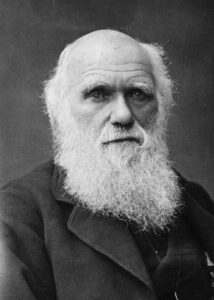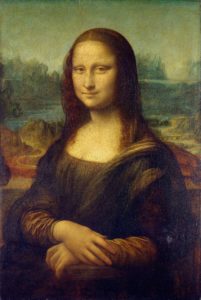The Mona Lisa Fingerprints
The Mona Lisa has been stolen! Someone broke into the Louvre Museum late last night and stole the most famous painting in the world. The police are at the crime scene collecting evidence and DNA samples and have identified three suspects. You are here because you are tasked with finding the real perpetrator of this horrendous crime. You have 45 minutes to solve all the biology puzzles which, once solved, will lead you to identify the thief. Maybe Darwin and his theories can help you out with this one! The police have generated 3 identity cards for each suspect which you need to closely read and use in the game. It’s time to show your skills in molecular Biology!
Leonardo da Vinci
A great Renaissance painter and author of numerous inventions such as the helicopter, Leonardo da Vinci is particularly well known to the general public for several pictorial works including L’Ultima Cena and The Mona Lisa.
Leonardo da Vinci was born in Vinci in 1452. His father noted his talent for drawing and at the age of five placed him as an apprentice in Verrocchio’s studio in Florence. At the age of 20, he joined the painters’ guild and began his career with remarkable works such as The Virgin with a Carnation and The Annunciation. At the same time, he improved the technique of sfumato (impression of mist). In 1481, the monastery of San Donato commissioned him to paint The Adoration of the Magi. Leonardo da Vinci never finished this painting. He left Florence for Milan. After completing The Virgin of the Rocks and the Equestrian Statue of Francesco Sforza, he found fame throughout Italy. In 1495 he was commissioned to paint L’Ultima Cena. In 1498, he produced the Mona Lisa and the Battle of Anghiari. Leonardo da Vinci also undertook a large number of studies on zoology, botany, anatomy and geology. He designed numerous devices and machines, including the first flying machine. These achievements remained at the drawing stage. Many of Leonardo’s sketches, notes and treatises are not original findings, but the result of research carried out in an encyclopaedic spirit, before the time. In 1516, he joined the court of Francis I, where he took part in town planning projects. He died of illness on 2 May 1519.
Charles Darwin
Charles Darwin was an English naturalist, geologist and biologist known for his theory of evolution. His proposition that all species of life have descended from common ancestors is now widely accepted and considered a fundamental concept in science.
Charles Robert Darwin was born in 1809 in England. His early interest in nature led him to ignore his medical education at the University of Edinburgh and instead, he helped to investigate marine invertebrates. His passion for natural science was encouraged through his studies at the University of Cambridge. During his 5-year voyage on the HMS Beagle, the observations and theories he made helped him become an eminent geologist. Puzzled by his findings on the geographical distribution of wildlife and fossils, Darwin began to investigate further, which helped him conceive his theory of natural selection in 1838. He also examined human evolution and sexual selection and conducted extensive research on plants. His 8-year work on barnacles helped him find homologies showing that slightly changed body parts served different functions to meet new conditions. In turn, this earned him the Royal Society’s Royal Medal in 1853 and made his reputation as a biologist. In 1959, he published one the most popular books of all time, On the Origin of Species, filled with detailed observations, inferences and consideration about homologies between humans and other mammals, sexual selection and the differences between human races which later proved to be extremely controversial. His theory of evolution, as descent with modification, is one of his biggest legacies and continues to be honoured across the world for his scientific discoveries.



